Created by Belgian illustrator Morris in 1946, the 95 books about the wandering cowboy have been adapted as cartoons and movies and have sold more than 300 million copies. But until now, Lucky Luke had almost never left American soil. His adventures had led him to Mexico (Tortillas for the Daltons, 1967) and Canada (The Daltons in a Blizzard, 1962), although never across the Atlantic. In A Cowboy in Paris, published in French and English, Lucky Luke has left the American West for the first time to visit France during the 19th century.
The Franco-Belgian cowboy comics series has never tried to hide its fascination for the legend of the Wild West. The first adventures of Lucky Luke were published in the Almanach de Spirou comic-book journal in 1947. Its protagonist was developed by illustrator Morris and writer Goscinny (who created the successful Asterix comics with Uderzo and Le Petit Nicolas with his friend Sempé). While sketching his cowboy, Morris drew inspiration from a gallery of historical figures such as judge and outlaw Roy Bean, adventurer Calamity Jane, and stagecoach robber Jesse James who terrorized law-abiding folks in the United States during the 1870s.
Cinema and the Hollywood actors of the illustrator’s youth were another source of inspiration, including Tom Mix, William Hart, Roy Rogers, Gene Autry, and Gary Cooper. Colorful characters compared to the cartoon cowboy, whose unshakable nerve sometimes drew criticism. At the start, Lucky Luke did however shoot down a few outlaws such as Bob Dalton, one of the four historical brothers along with Grat, Bill, and Emmett.
From the 12th book onwards he took on the Dalton cousins Joe, Jack, William, and Averell, who were out for revenge. But baby-boom-era France feared American comics and other publications would corrupt their children, and a form of moralism emerged. The law of July 16, 1949, on publications for young people forced Morris to censor his stories. Bob Dalton was captured alive, the saloon interiors were smoothed over, and the scantily-clad women were covered up. Even Lucky Luke swapped his cigarette for a piece of straw in 1983.
Morris in America
Morris left for the United States in 1948 with illustrators Franquin and Will in search of inspiration for his landscapes. He spent six years there, and met Harvey Kurtzman (founder of Mad magazine) and writer René Goscinny, who worked with him on the solitary cowboy’s adventures. Lucky Luke became a household name in Europe, partly thanks to Morris’ trademark turns of phrase that led to two now famous expressions in France: “The man who shoots faster than his shadow” in reference to the sheriff himself, and “the ninth art” to describe comic books and graphic novels.
According to critics, the standard of Morris’ last works before he passed away in 2001 is far below those published with Goscinny, who died in 1977. The torch was taken up in turn by French comedian Laurent Gerra and writers Daniel Pennac and Tonino Benacquista. However, the new writers failed to win over the original fans. The lukewarm reception was not down to Achdé, the series’ official illustrator since 2003, but rather due to “texts weighed down by the countless codes that had to be included (Rantanplan, Averell’s hunger, the use of shadows, etc.) which prevented interesting storylines and the book developing naturally.”
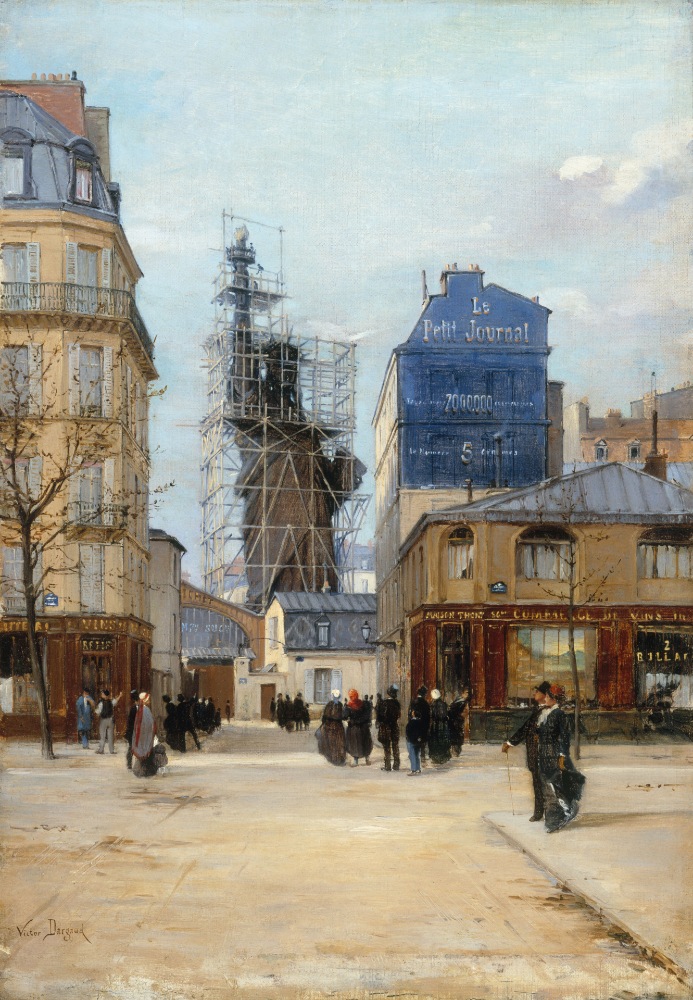
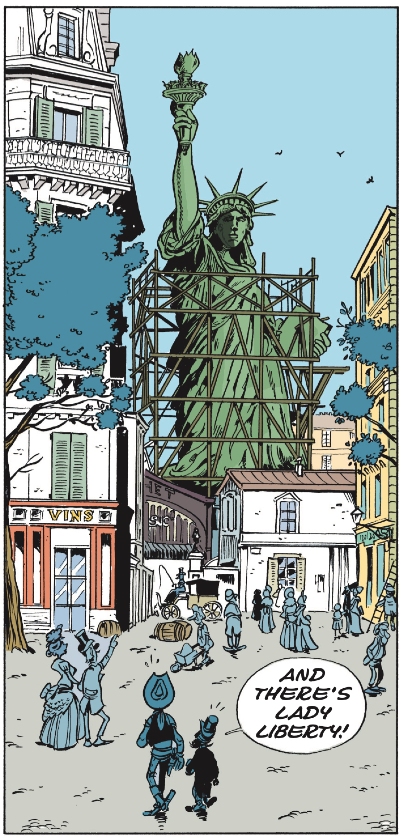
A major turning point came with the arrival of Jul, the author of the highly successful The Promised Land (380,000 copies sold) in which Lucky Luke escorts a family of Ashkenazi Jews from Europe across the Wild West. Lucky Luke, a Cowboy in Paris is the second work in the series written by Jul. Aside from the editorial shift which proved to be lucrative for the series’ publisher Dargaud and its Lucky Comics label, this change also heralded a geographical evolution with Lucky Luke leaving his native America for the first time and traveling to Europe. It was after finding an old photo of the Statue of Liberty from 1884 in Paris that the writer was inspired to tell this curious Franco-American tale.
An American in Paris
“I wondered which major event had happened between 1860 and 1886 – the years depicted in the Lucky Luke books,” says the writer, Julien Berjeaut, a.k.a. Jul. “And I discovered that was when the Statue of Liberty was built.” So the story opens with a strange encounter. While in the desert, Lucky Luke finds a giant bronze hand belonging to the statue designed by Auguste Bartholdi, gifted to America by the French in the late 19th century. The image is also reminiscent of the final scene of Franklin J. Shaffner’s movie Planet of the Apes.
“Bartholdi actually traveled across the United States with the statue’s arm to raise money. And that anecdote was a good match for the series, which typically features real historical events, a rather eccentric character, and a journey that leads him to meet unusual people.” The storyline follows Bartholdi on a promotional tour of the American West. While the statue is finished and ready to be delivered, the sculptor has to raise the money to finance its enormous base. The expedition begins, fraught with danger and potential pitfalls. And to make matters worse, a prison director and the story’s villain is looking to build the perfect penitentiary on Bedloe’s Island (now known as Liberty Island) at the entrance to New York harbor where the statue is set to be installed.
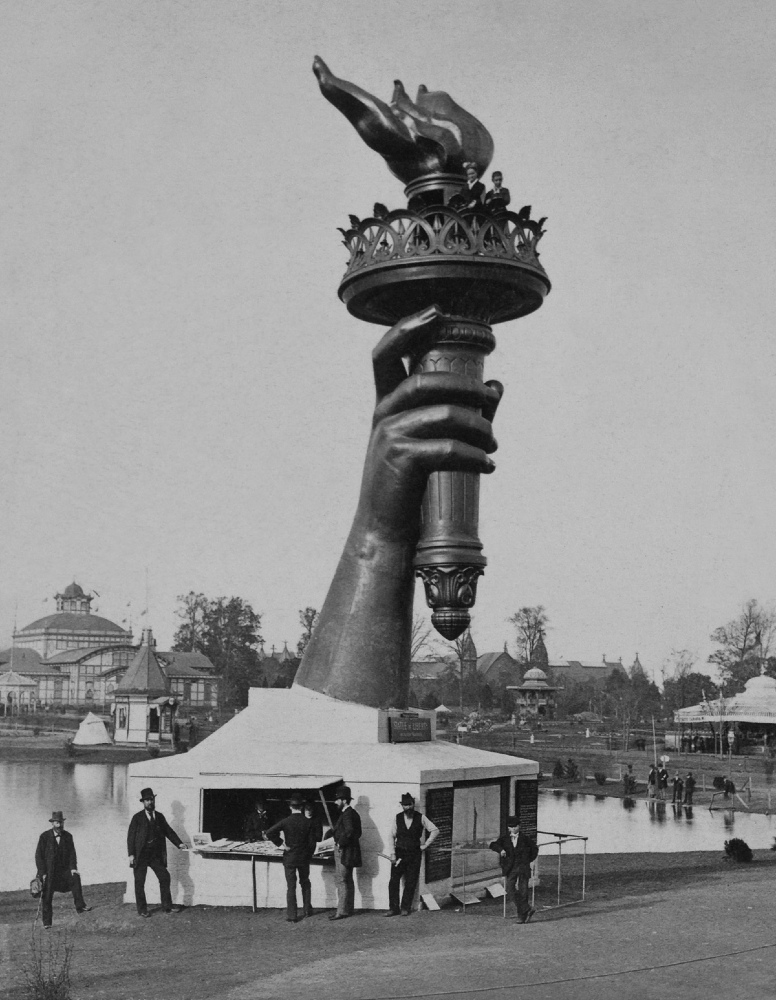
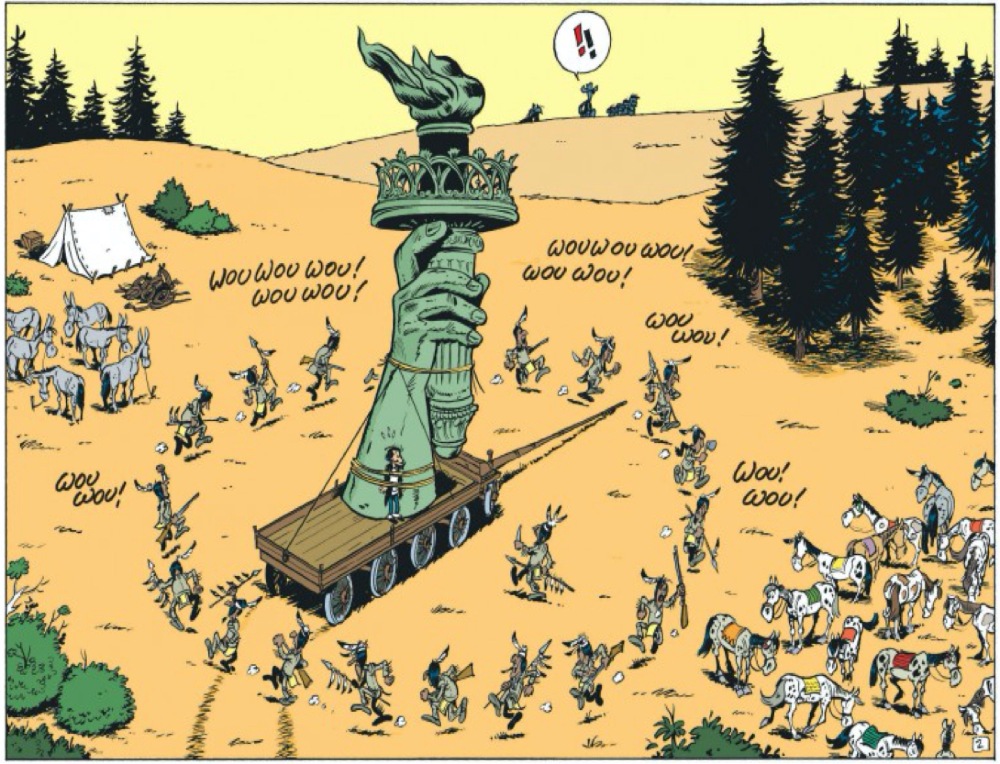
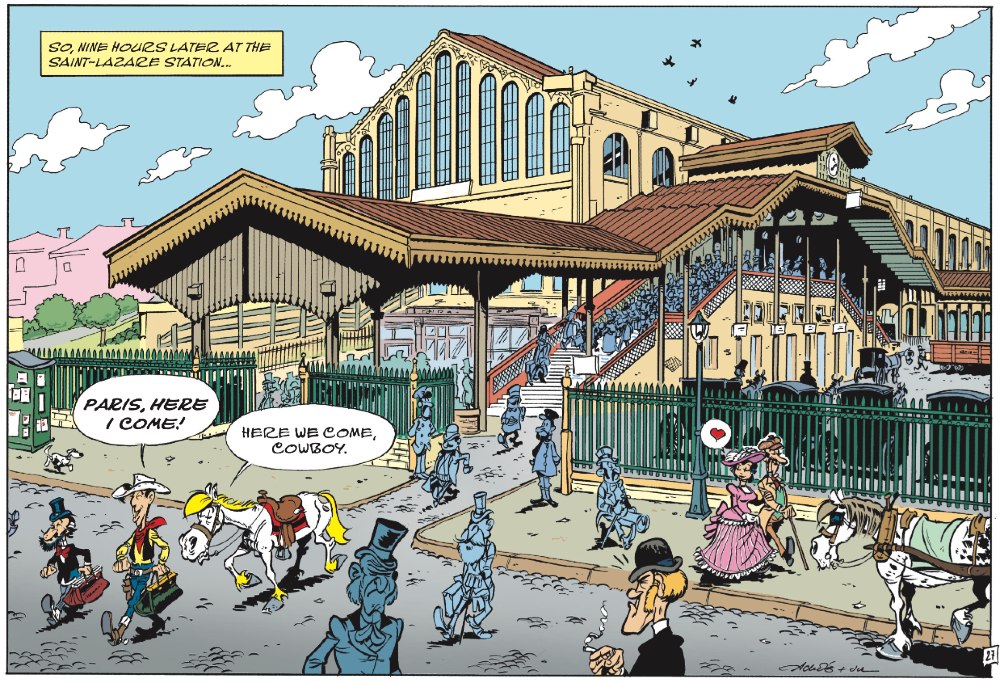
Lucky Luke offers to protect the French sculptor and escorts him to Paris on the behest of the U.S. vice-president. Upon arriving at Saint-Lazare station, he discovers the City of Lights and meets Madame Bovary, Gustave Eiffel, Claude Monet, Victor Hugo, Rimbaud, and Verlaine along the way. He develops a taste for frogs’ legs and the surliness of the garçons in the Parisian cafés, and also uses his time in the French capital to let his hair down by sampling Beaujolais wine and purchasing underwear for the saloon girls back home. And Jolly Jumper – known as Joli Jean-Pierre to the French – wins a horse race at the Auteuil track!
A Cowboy from Belgium
References to current affairs and the history of the series itself are craftily inserted. Such as a dyed-in- the-wool Parisian woman who asks a speechless Lucky Luke “Are you of Belgian descent, Mr. Luke? […] Those colors – black, yellow, and red – they’re the colors of the Belgian flag, aren’t they?” Or when the train stops in the middle of the tracks, somewhere in Normandy, and the cowboy asks: – “Is it desperados? Indians?” “Worse,” comes the reply from Bartholdi. “Railway workers!”
The illustrator meticulously depicted the iconic sites of the French capital, with a generous helping of references along the way. The gargoyles of Notre-Dame bear an odd resemblance to Rantanplan, while Rimbaud’s character is similar to the quick-tempered Billy the Kid. The 500,000 copies of A Cowboy in Paris were best-sellers in French bookstores before Christmas.
Lucky Luke, a Cowboy in Paris by Jul and Achdé, translated from French by Jérôme Saincantin, Cinebook, 2018.
Article published in the January 2019 issue of France-Amérique. Subscribe to the magazine.












